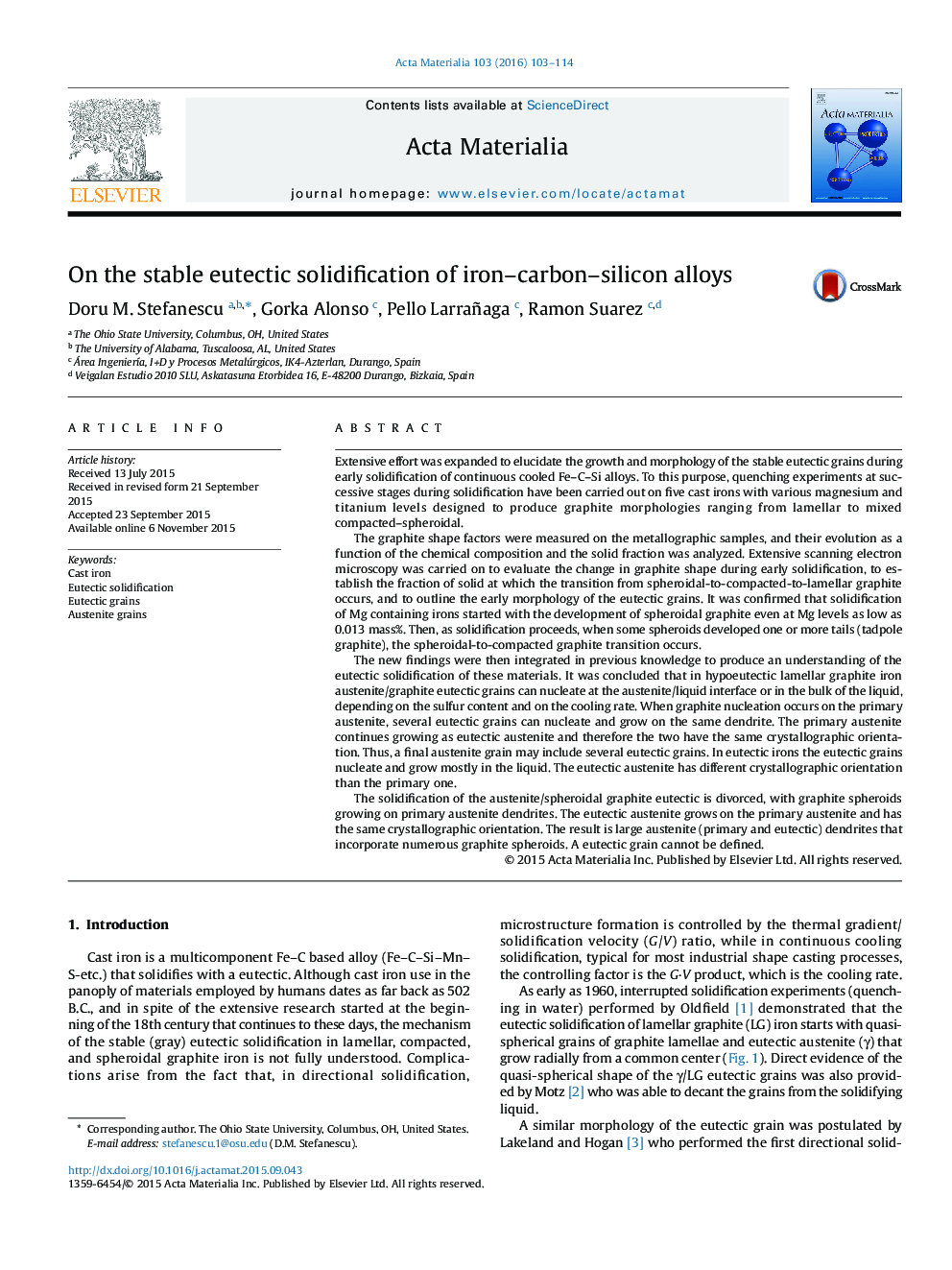| Article ID | Journal | Published Year | Pages | File Type |
|---|---|---|---|---|
| 7879225 | Acta Materialia | 2016 | 12 Pages |
Abstract
Fig. 1. Solidification of the eutectic in LG iron during continuous cooling. Quenching experiments at successive stages during solidification have been carried out to produce graphite morphologies ranging from lamellar to mixed compacted-spheroidal. It was confirmed that solidification of Mg containing irons started with the development of spheroidal graphite even at Mg levels as low as 0.013 mass%. Then, as solidification proceeds, when some spheroids developed one or more tails (tadpole graphite), the spheroidal-to-compacted graphite transition occurs. In hypoeutectic lamellar graphite iron, austenite/graphite eutectic grains can nucleate at the austenite/liquid interface or in the bulk of the liquid, depending on the sulfur content and on the cooling rate. A variety of substrates can act as nuclei, including Ti carbonitrides carbon-rich regions, or MnS. In eutectic irons the eutectic grains nucleate and grow mostly in the liquid. The eutectic austenite has different crystallographic orientation than the primary one (Fig. 1a, b). When graphite nucleation occurs on the primary austenite, several eutectic grains can nucleate and grow on the same dendrite (Fig. 1c, d). The primary austenite continues growing as eutectic austenite and therefore the two have the same crystallographic orientation. Thus, a final austenite grain may include several eutectic grains. The solidification of the austenite/spheroidal graphite eutectic is divorced, with graphite spheroids growing on primary austenite dendrites. The eutectic austenite grows on the primary austenite and has the same crystallographic orientation. The result is large austenite (primary and eutectic) dendrites that incorporate numerous graphite spheroids. A eutectic grain cannot be defined.107
Keywords
Related Topics
Physical Sciences and Engineering
Materials Science
Ceramics and Composites
Authors
Doru M. Stefanescu, Gorka Alonso, Pello Larrañaga, Ramon Suarez,
